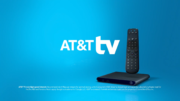AT&T announced second quarter earnings with as little fanfare as possible last night. It was after 5pm on the East, and so a lot of news outlets (this one included) didn’t even pick the story up until today’s cycle began.
The news is excellent if you’re an AT&T stockholder or wireless phone fan. The company is stronger than ever. But then again you come to this site to hear about satellite TV, don’t you? So let’s go there.
The DIRECTV operation added 342,000 net subscribers and AT&T further reported that since the two companies became one, over one million net subscribers have been gained. DIRECTV is also right on track to roll out its three new streaming services, which AT&T CFO John Stephens called “a game changer.” These services are aimed at different segments of the cord-cutter community, and include DIRECTV Now, which is expected to be the most full-featured streaming service with more streaming channels and a price that veers close to traditional pay-TV service.
There was somewhat less focus on the fact that the U-Verse service continues to sink with 391,000 net losses. When you look at it that way, DIRECTV didn’t even pick up all the people who churned out of U-Verse. But that is a fairly pessimistic way of looking at things. There aren’t any numbers as to what percentage of those people who left U-Verse then went to DIRECTV, but it’s fair to assume that some of them only had U-Verse TV because they couldn’t get DIRECTV (for example they had no view of the sky or were in an apartment complex where it wasn’t possible) so DIRECTV wasn’t going to get those people. I mean, honestly, why would you still be with U-Verse TV if you had another choice anyway? So in the absence of other data, I’ll choose to believe that many of those U-Verse dropouts went to DIRECTV, as many as could go, and that DIRECTV effectively gained a bunch of new subscribers as well.
For those who were looking for some nugget of DIRECTV wisdom like we used to get in the old days, there was (of course) a bunch of disappointment. AT&T just doesn’t talk tech in their financial calls, unless they’re talking about how much money they saved on it. They’re claiming to have already saved close to $2 billion on “synergies” relating to the merger, with another half billion on the table for the next year or so. Yes, I can tell you that some people were laid off. That’s usually what “synergies” means. But a lot of those savings come from technology, from integrating systems together in a more efficient way. A lot of it comes from pouring more money into the vastly better DIRECTV infrastructure and less money into U-Verse TV.
A lot of people forecast doom and gloom at several points along the way since the original news of the DIRECTV/AT&T deal. Some claimed that DIRECTV would be weighed down by big corporate thinking, others said that the costs of integrating the two companies would take away from capital needed to compete with Comcast. The obvious and simple fact remains that the deal was a good idea. The company continues to grow and dominate, and continues to provide a unique value that no competitor can match. With 25 million subscriber homes, they represent a huge portion of the home entertainment market, yet they haven’t engaged in any of the shady tactics that critics were prepared to accuse them of.
Seems to me when investors love you, your customers love you, and your employees love you, you must be a great company. So, I’ll say, “well done AT&T” and look forward to the next set of financials.
By the way, if you’re interested in the official AT&T take on their financials, you’ll find it here.




